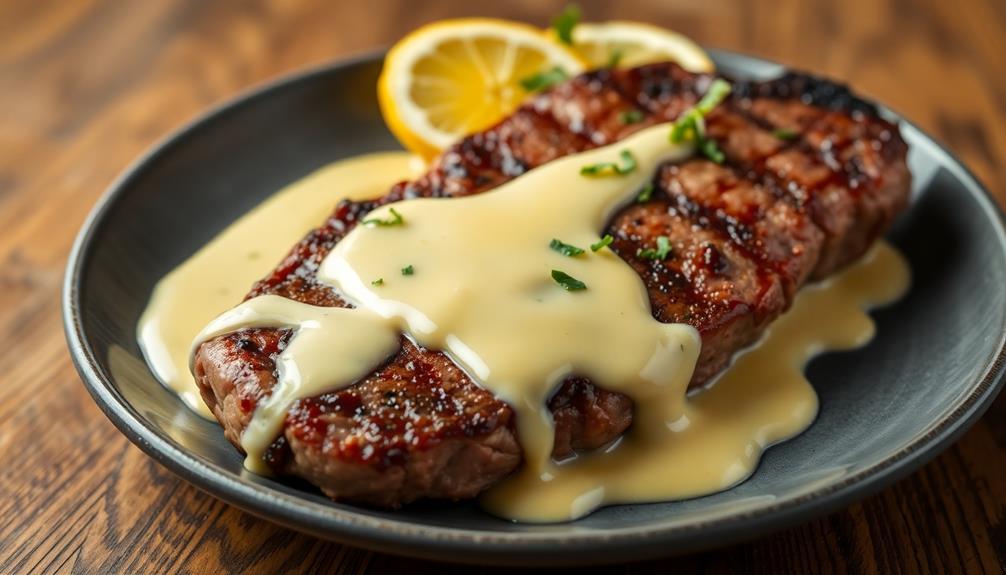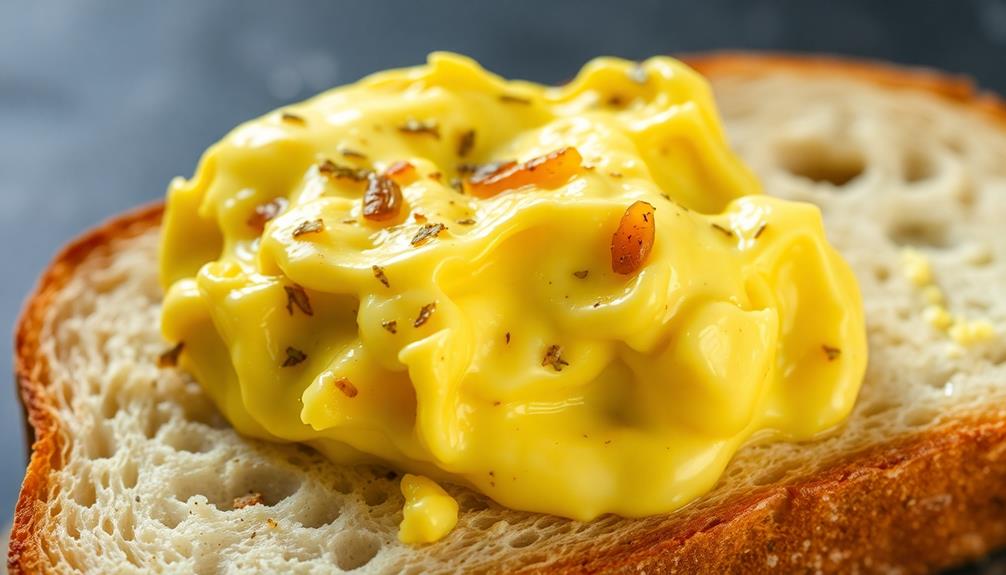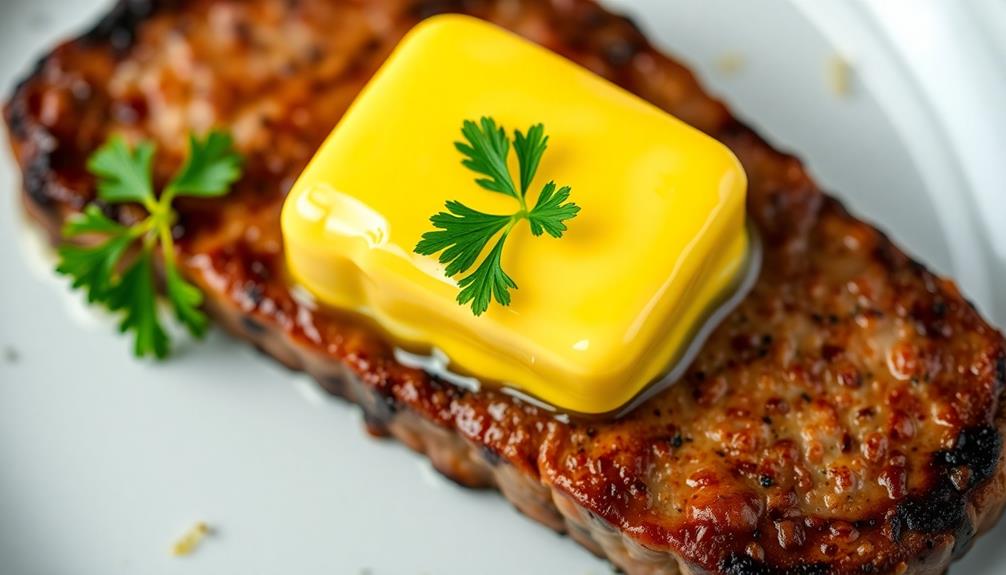Elevating any dish to new heights is easy with a perfectly crafted beurre blanc, the classic French butter sauce that's graced fine dining tables for centuries. Originating in the Loire Valley, this versatile sauce combines the richness of butter with tangy white wine and vinegar, creating a silky emulsion that complements proteins and veggies beautifully. The key is mastering the technique – gently whisking cold butter into a wine-vinegar reduction to build that signature velvety texture. With a few simple steps, you'll be spooning this luxurious sauce over seafood, meats, and more. Just wait until you see how it elevates every bite!
Key Takeaways
- Prepare a white wine and vinegar reduction with sautéed shallots to create the base of the beurre blanc sauce.
- Slowly whisk in cold, unsalted butter to emulsify the sauce and achieve a rich, velvety texture.
- Season the beurre blanc with salt and white pepper to balance the acidity and enhance the overall flavors.
- Serve the beurre blanc warm immediately to maintain the emulsion and prevent it from separating.
- Pair the beurre blanc with seafood, vegetables, or as a dipping sauce to elevate the dining experience.
History
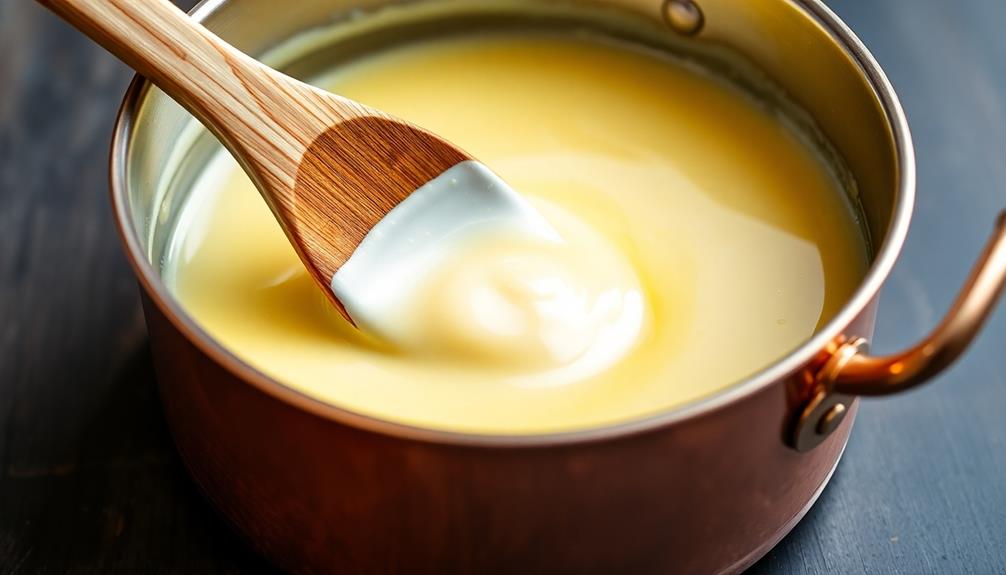
Beurre blanc, a classic French sauce, has a rich history dating back to the 19th century. Its origins can be traced to the Loire Valley, where inventive chefs were constantly experimenting with new flavor combinations.
One chef, in particular, is credited with creating the original beurre blanc – a silky, buttery sauce that perfectly complements delicate proteins like fish and poultry.
Over time, the recipe has been refined and perfected, with each region and chef putting their own unique spin on the classic.
Today, beurre blanc is a staple in French cuisine, adored for its ability to elevate even the simplest dish. The sauce's velvety texture and tangy, buttery flavor have made it a favorite among home cooks and professional chefs alike.
As you embark on your own beurre blanc journey, you'll be joining a long line of culinary enthusiasts who've fallen in love with this remarkable sauce.
Get ready to experience the rich history and unparalleled flavor of this beloved French creation.
Recipe
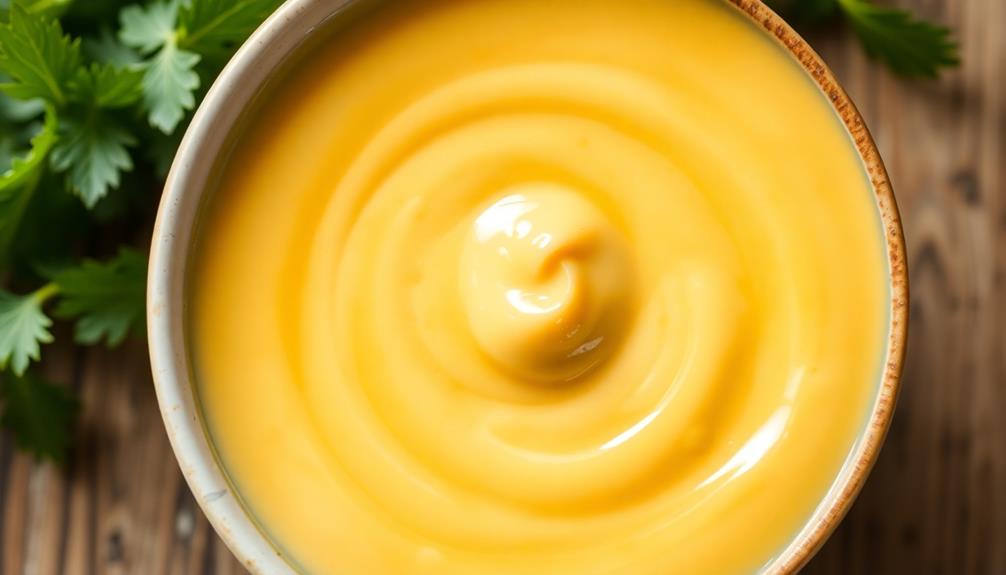
Beurre blanc is a classic French sauce that's smooth, rich, and velvety. It's made by whisking cold butter into a reduction of white wine, vinegar, and shallots. The result is a luxurious sauce that pairs perfectly with fish, seafood, and vegetables.
The key to a successful beurre blanc is maintaining the right temperature and emulsion. If the sauce gets too hot, the butter will break and the sauce will separate. Patience and careful temperature control are essential for achieving the perfect beurre blanc.
Ingredients:
- 1/2 cup dry white wine
- 2 tablespoons white wine vinegar
- 2 shallots, finely minced
- 1 cup (2 sticks) unsalted butter, cubed and chilled
- Salt and white pepper to taste
Instructions:
In a small saucepan, combine the white wine, vinegar, and shallots. Bring to a simmer over medium heat and cook until the liquid is reduced by half, about 5-7 minutes.
Reduce the heat to low and whisk in the cubed butter, one piece at a time, until the sauce is smooth and emulsified. Season with salt and white pepper to taste.
When making beurre blanc, it's important to keep the sauce at a gentle simmer and to whisk the butter in slowly to prevent the sauce from breaking.
If the sauce does start to separate, remove it from the heat and whisk in a small cube of cold butter to help re-emulsify it.
Serve the beurre blanc immediately, as it can't be reheated without the risk of separation.
Cooking Steps
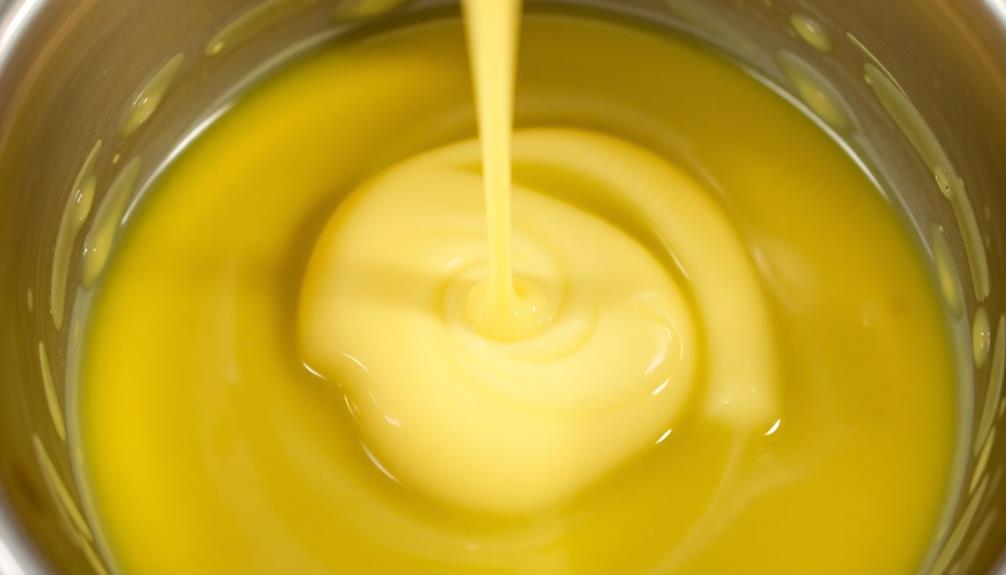
First, sauté the shallots until they're a paste-like consistency.
Next, whisk in the butter a little at a time, allowing it to emulsify.
Then, add the wine and let it reduce by half.
Step 1. Reduce Shallots to a Paste
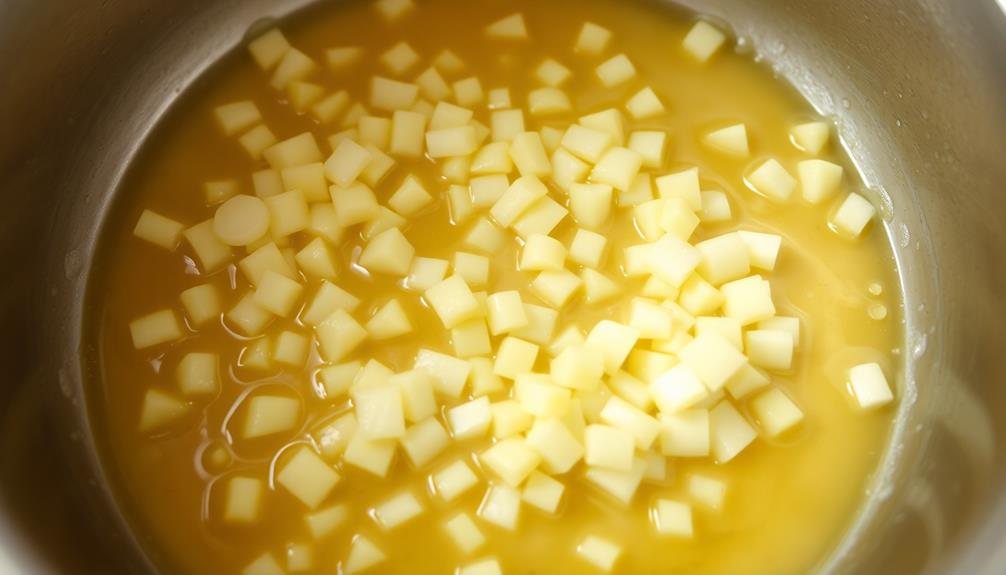
Next, you'll want to reduce the shallots to a paste. In a small saucepan, place the chopped shallots and a splash of white wine vinegar.
Gently heat the mixture over medium-low, stirring frequently, until the shallots become soft and translucent. As they cook, the vinegar will help break down the shallots, turning them into a fragrant, spreadable paste.
Keep a close eye on the pan, adjusting the heat as needed to prevent burning. The goal is to coax out the sweetness of the shallots without letting them become crispy or dry.
Once they've reached the desired paste-like consistency, remove the pan from the heat and set the shallot mixture aside.
This flavorful base will be the foundation for your luscious beurre blanc sauce. The silky smooth texture and aromatic shallots will provide depth and balance to the rich, creamy final product.
Step 2. Whisk in Butter, a Little at a Time
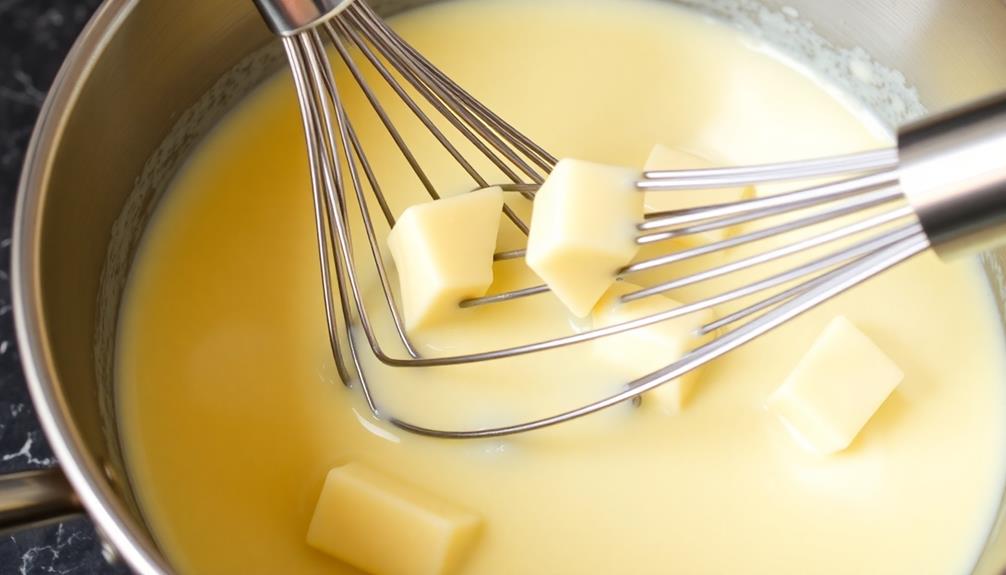
With the shallot paste ready, you can now start building the beurre blanc sauce. Grab a large, heavy-bottomed saucepan and place it over medium heat. Add the white wine and lemon juice, then whisk vigorously to combine. Allow the mixture to simmer, reducing it by half, about 5 minutes. For a rich flavor, consider using high-quality top butter brands that will enhance the sauce.
Once reduced, remove the pan from the heat and begin whisking in the cold butter, one cube at a time. Whisk continuously, incorporating each piece of butter fully before adding the next. The slow, steady addition of butter is crucial, as it will emulsify the sauce and create that signature silky, velvety texture.
As the butter melts, the sauce will thicken to a luxurious consistency. Keep a close eye, whisking gently to prevent the sauce from breaking.
When all the butter has been incorporated, your beurre blanc is ready to serve. Drizzle it over fish, chicken, vegetables, or anything else you desire. The rich, tangy sauce will elevate every bite.
Step 3. Add Wine and Reduce
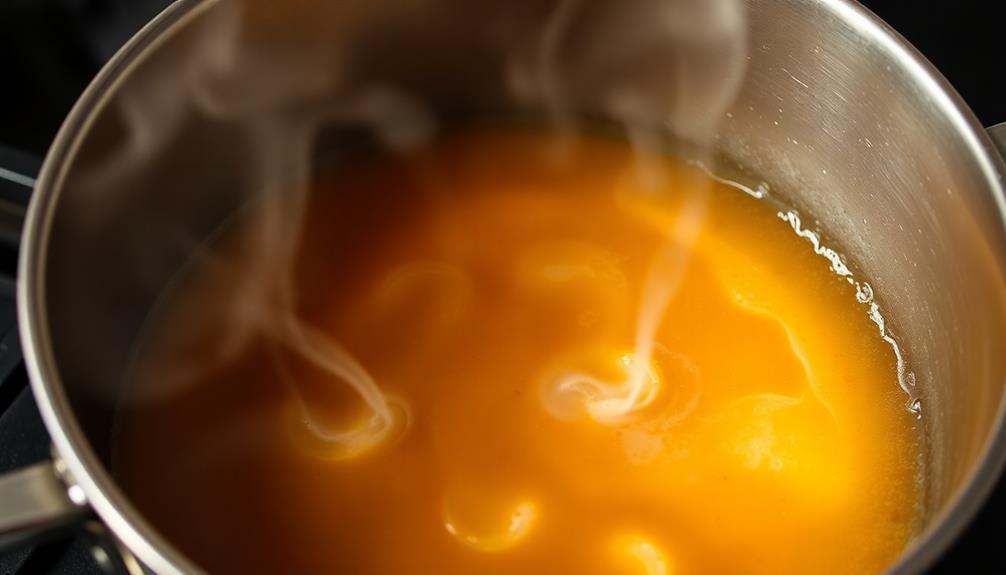
With the shallot paste ready, you can now start building the beurre blanc sauce. First, pour the white wine into the saucepan and bring it to a gentle simmer over medium heat. Allow the wine to reduce by half, which should take about 2-3 minutes. This step intensifies the wine's flavor and removes any harsh, alcoholic notes.
Next, start adding the cold butter, one cube at a time, whisking constantly to incorporate it into the sauce. Work slowly and patiently, allowing each piece of butter to melt before adding the next. The key is to emulsify the butter gradually, creating a rich, creamy texture.
If the sauce begins to break or look separated, remove it from the heat and whisk vigorously to bring it back together. Continue this process until all the butter has been incorporated.
The final beurre blanc should have a silky, velvety consistency that coats the back of a spoon. At this point, you can season with a touch of salt and white pepper to taste.
Step 4. Swirl in Heavy Cream Until Emulsified
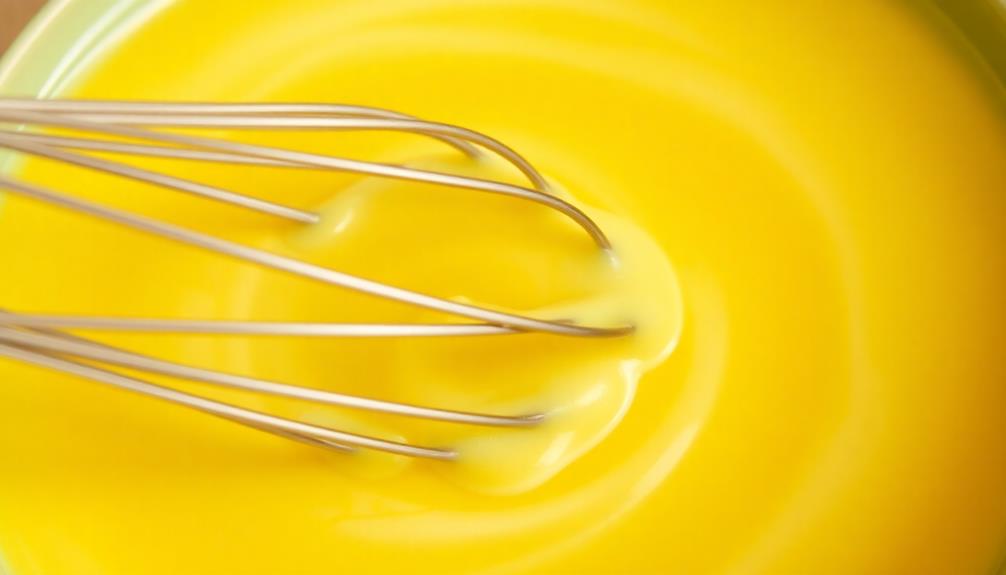
Once the butter has been fully incorporated, you'll want to swirl in some heavy cream to further emulsify the sauce. This is a crucial step, as the cream helps bind the ingredients together, creating a silky, velvety texture.
Slowly drizzle in the cream while continuously whisking the mixture. You'll notice the sauce start to thicken and become glossy as the emulsion forms. Keep whisking gently until the cream is fully incorporated and the sauce has reached your desired consistency.
Don't be afraid to add a little more cream if the sauce seems too thick. The key is to find the right balance, where the beurre blanc is rich and creamy, but still light and smooth.
Once you've achieved the perfect emulsion, your beurre blanc is ready to be spooned over your favorite dishes, elevating every bite with its luxurious, velvety goodness.
Step 5. Season With Pepper
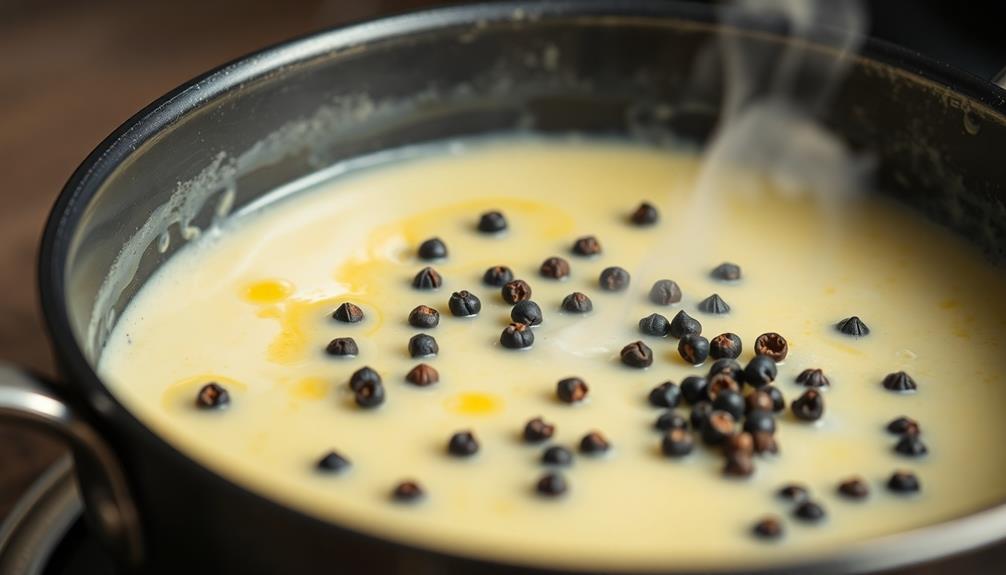
After creating the emulsified base, you'll want to season the beurre blanc with freshly cracked black pepper. The robust, earthy flavor of the pepper perfectly complements the rich, velvety texture of the sauce.
Using a pepper mill, grind the peppercorns directly over the pot, letting the fragrant aroma fill the air. Start with just a few turns, then give the sauce a gentle stir to evenly distribute the pepper.
Taste the beurre blanc and add more pepper if desired, adjusting the seasoning until it's just right. The key is to find the right balance – you want the pepper to enhance the butter's creaminess without overpowering it.
Imagine the way the peppery notes dance on your tongue, elevating each bite. With the perfect seasoning, your beurre blanc will be an absolute delight, ready to drizzle over seafood, vegetables, or anything else that needs a luxurious finishing touch.
Final Thoughts
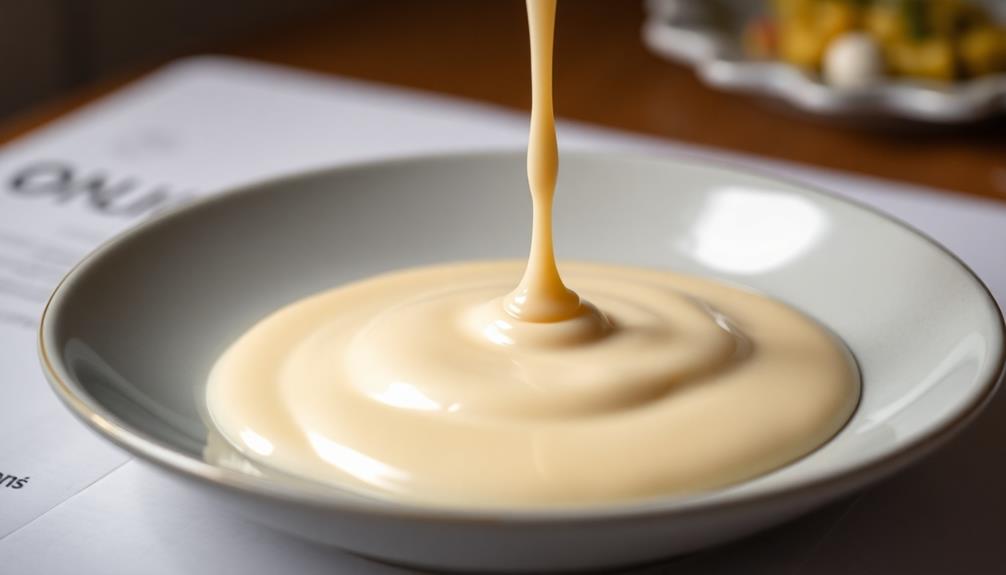
The versatility of beurre blanc is truly remarkable. This luxurious, velvety sauce can elevate any dish, from delicate seafood to robust meats. Its silky texture and tangy flavor make it an indispensable addition to your culinary repertoire.
Once you've mastered the art of crafting this sauce, the possibilities are endless. Drizzle it over pan-seared scallops for a decadent appetizer, or use it as a base for a creamy pasta dish. Beurre blanc also pairs beautifully with grilled salmon, roasted vegetables, or even as a dipping sauce for crusty bread.
Don't be intimidated by the seemingly complex preparation. With a little practice, you'll be whipping up perfect beurre blanc in no time.
Frequently Asked Questions
Can Beurre Blanc Be Made Ahead of Time?
You can make beurre blanc ahead of time, but it's best to prepare it just before serving. The emulsion is delicate and can break if it's reheated or stored for too long. For the best results, make it fresh when you need it.
How Do I Prevent the Sauce From Breaking?
To prevent the sauce from breaking, keep the temperature low, add butter slowly, and avoid overcooking. Whisk continuously to emulsify the ingredients. If it does break, try whisking in a bit of warm water to bring it back together.
What Are Some Alternative Ingredients to Use?
You can try using other types of fat like olive oil, coconut oil, or even a combination of butter and cream. These alternatives can provide a different flavor profile while still helping to stabilize the emulsion.
Can Beurre Blanc Be Reheated or Stored?
Beurre blanc can be reheated, but it requires careful handling. Store it in the fridge for up to 3 days, then gently reheat it over low heat, stirring constantly, until it's smooth and creamy again.
How Do I Adjust the Consistency of the Sauce?
To adjust the consistency of the sauce, you can add a bit more cold butter to thicken it or a splash of warm water or stock to thin it out. Play with the ratios until you achieve your desired texture.



